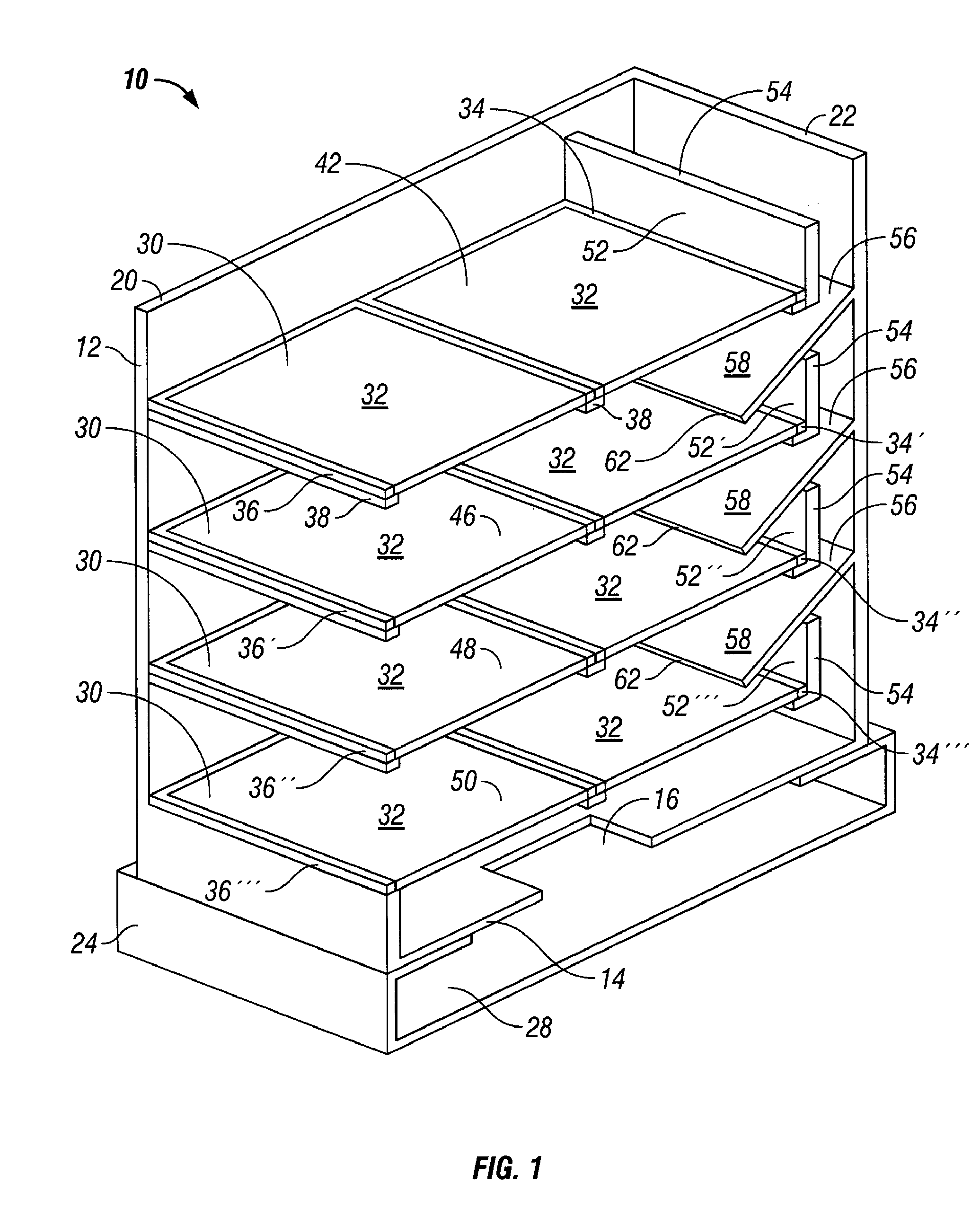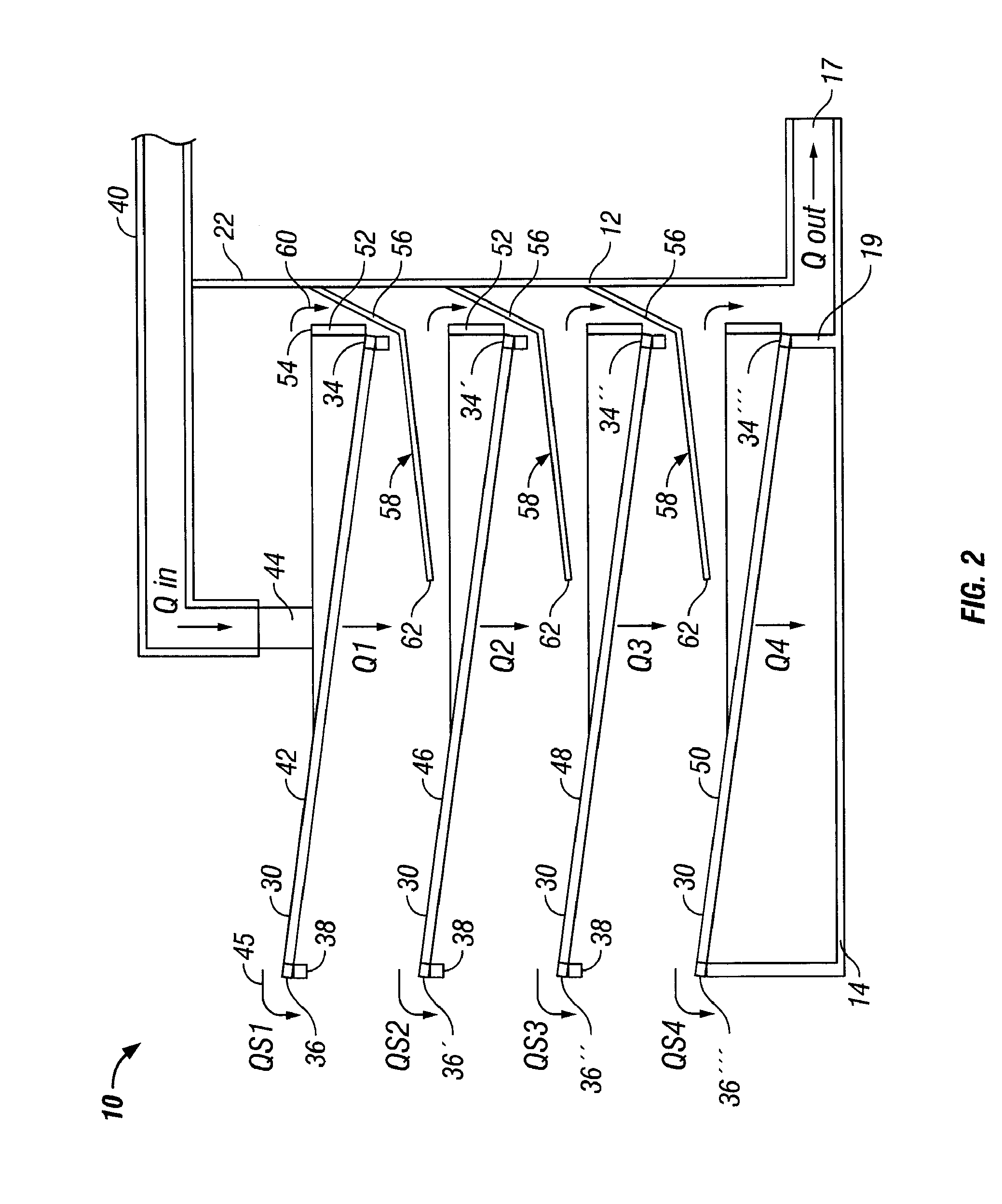Vibratory Separator
a separator and vibrating technology, applied in the field of vibrating separators, can solve the problems of time-consuming and expensive mud evaluation and mixture process, affecting the quality of filtration separation,
- Summary
- Abstract
- Description
- Claims
- Application Information
AI Technical Summary
Problems solved by technology
Method used
Image
Examples
Embodiment Construction
[0020] In one aspect, embodiments disclosed herein relate to a shale shaker having a screen arrangement precluding the loss of whole mud over the front edge of the screening surface. Specifically the embodiments disclosed herein relate to a shale shaker having an arrangement of screening surfaces, weirs, and a flow director to direct excess fluid to a subsequent screening surface or a collection area for recirculation through the shaker.
[0021] Referring to FIGS. 1 and 3, a shaker in accordance with an embodiment of the present invention is shown. The reference numeral 10, refers, in general, to a vibrating screen separator assembly that includes a basket 12 that includes a bottom wall 14 having an opening 16, a pair of side walls, 18 and 20 (side wall 18 shown in FIG. 3), and an end wall 22. Side walls 18 and 20 are spaced-apart and have first ends and second ends. The first ends of each side wall 18, 20 are connected to end wall 22, wherein the end wall is located at the feed end ...
PUM
| Property | Measurement | Unit |
|---|---|---|
| Flow rate | aaaaa | aaaaa |
| Height | aaaaa | aaaaa |
| Mesh size | aaaaa | aaaaa |
Abstract
Description
Claims
Application Information
 Login to View More
Login to View More - R&D
- Intellectual Property
- Life Sciences
- Materials
- Tech Scout
- Unparalleled Data Quality
- Higher Quality Content
- 60% Fewer Hallucinations
Browse by: Latest US Patents, China's latest patents, Technical Efficacy Thesaurus, Application Domain, Technology Topic, Popular Technical Reports.
© 2025 PatSnap. All rights reserved.Legal|Privacy policy|Modern Slavery Act Transparency Statement|Sitemap|About US| Contact US: help@patsnap.com



